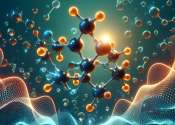Discovery of an Unexpected Boost for Solar Water-Splitting Cells
(PhysOrg.com) -- A research team from Northeastern University and the National Institute of Standards and Technology has discovered, serendipitously, that a residue of a process used to build arrays of titania nanotubes—a ...









